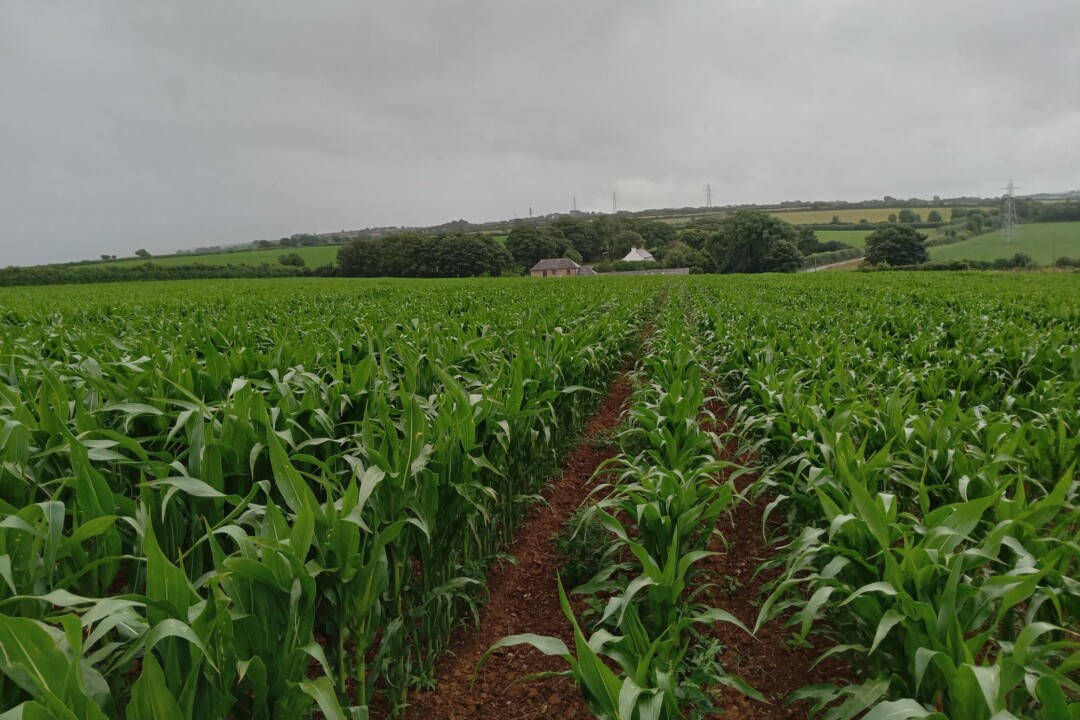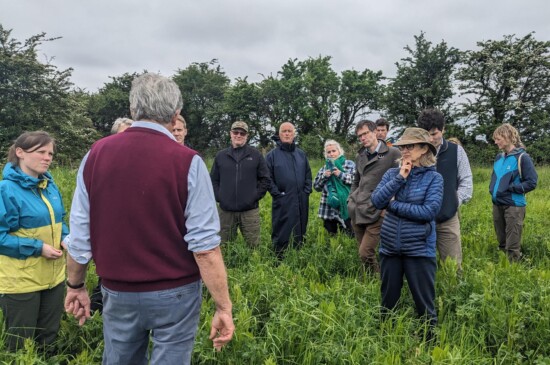
Farmers look to help rivers by cutting plough use in maize trials, supported by KCCF
- Countryside
Innovative Farmers is part of the Duchy Future Farming Programme. The network is funded by King Charles III Charitable Fund through the sales of Waitrose Duchy Organic products. We are proud to have supported Innovative Farmers for over a decade, awarding more than £4m to help farmers with on-farm research trials. Read more about two of the on-farm trials below: farmers are testing if a selective approach to tillage can help them grow maize productively while reducing costs and environmental impacts.
In the UK, maize is typically a plough-dependent crop as it needs a fine seed bed to establish and is easily outcompeted in its early growth stage. But this heavy ploughing can lead to degraded and compacted soils that risk polluting rivers via run-off.
Working with the Farm Net Zero project in Cornwall, farmers are leading an Innovative Farmers field lab testing a strip-till approach, where the top layer of soil is disturbed in strips, rather than full immersion ploughing of the entire field.
So far, this approach has not negatively impacted yields, even having a positive impact in some cases, while reducing fuel and machinery costs, and boosting soil health.
Boost for yields, crop quality and nature
Cornish arable farmer Malcolm Barrett trialled two different types of strip-till drill, which he compared to a control of disc cultivation – a min till technique he had already found to be a better approach for his soils.
He saw equal or increased yields from using the strip drill, and he also trialled direct drilling with no soil disturbance which saw a small yield reduction. But Barrett also found the nutritional quality of his maize improved along with his soil structure, and he was able to save fuel costs on establishment.
He said: “The difference we can see in the soil in the last two years since we started a min till approach is phenomenal. The cattle aren’t poaching the fields, we can drive our machinery across the soil without it sinking, and the number of worms we’ve now got is unbelievable. The first thing you notice when you walk the field is the worm holes, and how the water is being absorbed into the soil instead of sitting on top.
“Where we have seen slight reductions in yield it’s been offset by reducing our establishment costs, and some of the losses are due to where we didn’t get our machinery to line up properly. A lot of this is just about experimenting and learning the best approach to get the best result.
“It’s been a real change in mindset to get off the treadmill. We used to take our soils for granted whereas now I call myself a livestock farmer because there’s livestock that live in the ground and we need to look after them as much as the ones above the ground.”
Barrett added he is interested to see how his customer’s milk yields could be impacted by nutritional improvements in the maize crop. The next step on from measuring yields will be to test soil samples for soil carbon and organic matter – and the farmers are hopeful for good results from the observations they have made.
Carbon benefits and living mulch potential
Devon farmer Andy Gray is working on a separate field lab also testing strip-till, but while growing a permanent living understory of clover. He said this practice is commonplace in Switzerland as a method of preventing run-off into rivers resulting from growing maize.
Gray hopes the clover will maintain cover for the soil and roots to anchor it, while feeding the soil biology from October until the maize is established. Clover may also suppress weeds and fix nitrogen, reducing the need for inputs. Although he is trialling a slow growing clover, it could compete with maize for water and light so he will compare methods of supressing it using glyphosate and sheep grazing. Clover was established last year using an interrow drill into growing maize – providing winter soil cover post-harvest – and Gray will then strip-till ahead of precision drilling maize this Spring.
He said: “Maize produces enormous amounts of carbon for soils if you grow it well, but if you’re destroying your soil structure every year then you’re letting all that benefit out again.
“With a living mulch we should be able to get combined soil health benefits through continuous cover and maize’s extraordinary ability to photosynthesis during the summer months.
“I’m determined this approach will work, but it’s a long-term way of thinking to deliver a financially sustainable system. I’m willing to put up with a yield penalty initially if I can see that in the long term I’m building the asset value of my farm – my soil.
“To me it’s a no brainer, we just have to find a way to make it work profitably.”
Gray also believes the clover choice could be critical and this could be a long trial if he needs to change variety. But he hopes to benefit from the new Sustainable Farming Incentive options for cover cropping and companion cropping.
Innovative Farmers arable advisor Jerry Alford said: “Maize can be a useful crop but there are multiple challenges in growing it in a nature-friendly way. These two field labs are seeking to tackle similar issues in different ways so the combined results of both will help to provide practical insights to any farmer, showing the vital role of farmer-led research.”
Both trials are open for new farmers. To get involved and for open-source information on all field labs, visit innovativefarmers.org.


